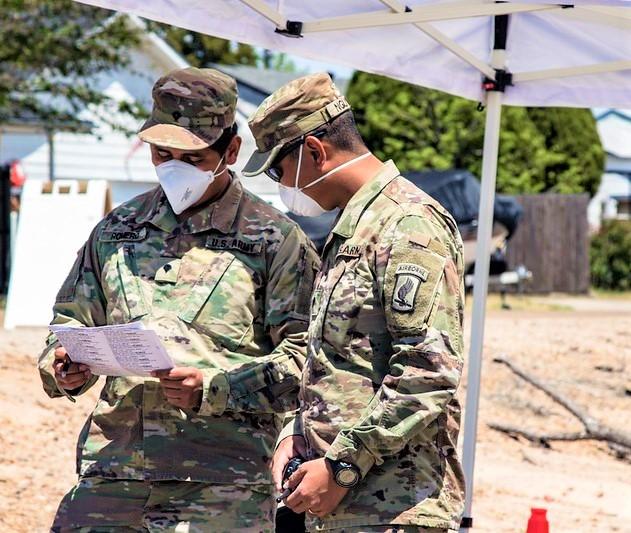The United States reported 36,975 new COVID-19 cases yesterday, its highest daily total since the novel coronavirus pandemic began this winter.
The cases piled up in states such as California, Texas, and Florida, with each state reporting between 5,000 and 7,000 new cases. In Texas, Governor Greg Abbott today suspended the further reopening of his state.
"As we experience an increase in both positive COVID-19 cases and hospitalizations, we are focused on strategies that slow the spread of this virus while also allowing Texans to continue earning a paycheck to support their families," Abbott said in a statement today. "The last thing we want to do as a state is go backwards and close down businesses. This temporary pause will help our state corral the spread until we can safely enter the next phase of opening our state for business."
Oregon, Nevada, Kansas, Louisiana, and North Carolina have also announced reopening pauses or delays in the past week in light of increasing case counts.
Today Abbott also suspended elective surgeries and medical procedures in Bexar, Dallas, Harris, and Travis counties in an effort to free up hospital beds. The counties represent San Antonio, Dallas, Houston, and Austin. Texas Public Radio said yesterday that San Antonio's ventilator availability dropped below 70%, and one Houston hospital's intensive care unit capacity was already at 120%.
Yesterday Texas tracked 5,551 new cases and 29 new deaths, bringing state totals to 125,921 cases and 2,249 fatalities. Harris county and the metro Houston area have nearly 25,000 cases.
Yesterday, Abbott urged Texans to stay home if possible, maintain physical distancing, and wear a face covering in public.
Non-elderly could also be at risk for severe disease
While age is still one of the biggest risk factors for severe COVID-19, the director of the Centers for Disease Control and Prevention (CDC) today warned that younger adults with co-morbidities can get very sick from the virus.
A body mass index over 30, not 40, puts you at risk for severe COVID-19 infection regardless of your age, said CDC Director Robert Redfield, MD. So does chronic kidney disease, chronic obstructive pulmonary disease, and type 2 diabetes.
Redfield and Jay Butler, MD, the CDC's deputy director for infectious diseases, held a media briefing today to discuss new guidelines concerning who is most at risk for severe COVID-19 complications. They warned that 40% of Americans are obese and 60% have at least one chronic health condition. Though risk does increase with age, that's likely because older Americans are more likely to suffer one or more co-morbidities.
If you are at risk for severe illness, Redfield urged physical distancing.
"The most powerful tool we have is social distancing, the virus is not efficient going 6, 7, or10 feet between people," said Redfield. "If we can also wear masks in public and practice vigilance in hand hygiene [those are] really powerful tools as we go into fall and winter."
Redfield's and Butler’s warnings come 1 week before Americans will celebrate the Fourth of July long weekend. They said increasing cases among adults under 45 mean the CDC's message that older Americans are most at-risk for the virus is being heeded, but younger Americans need to receive more targeted messages.
When asked about the rising cases in the South and West, Redfield said he was focused on the consequences of those cases.
"We need to look at hospitalization, mortality, and death, and the disruption of the economy and school system," Redfield said. He also said the increase in cases in those states is linked to testing asymptomatic, younger patients. In March and April, asymptomatic patients were not tested, he said, and serologic surveillance data from the CDC suggest that in those early months of the pandemic, every positive case in the United States represented 10 positive but untested cases.
Though he said the increasing case counts were cause for concern, Redfield said the country was in a different situation today than in March or April.
"Two months ago, 25% of deaths in the country were due to COVID, pneumonia, or influenza-like illness," he said. "Now that's down to 7%."
That same sentiment was shared by Vice President Mike Pence yesterday in a closed-door lunch with Republican senators, according to the Washington Post. Pence reportedly said that while cases are rising, mortality is not, because younger people are being infected.
Expert warns of new hot spots
Ashish Jha, MD, MPH, director of the Harvard Global Health Institute, sounded the alarm on Twitter on five states he believes could be the next major hot spots: Georgia, Mississippi, Oklahoma, Nevada, and South Carolina. He wrote that in each of those states cases are up, percentage of positive tests are up, and hospitalizations are rising.
"Remember that rising hospitalizations are a lagging indicator, occurring 10-12 days after infection, 5-7 days after symptom onset," he wrote. "That means that as hospitalizations rise, you've got 10+ days of rising infections baked in. Each of these states needs to take more urgent action to curtail its rising number of infections.”
Up to 150,000 deaths projected by mid-July
Both the CDC and the University of Washington’s Institute for Health Metrics and Evaluation (IHME) released new models adjusting predicted fatalities in the US.
The CDC's model, based on 20 national forecasts, predicts there will be between 130,000 and 150,000 total reported COVID-19 deaths by Jul 18.
The number of new deaths over the next 4 weeks will increase in Arizona, Arkansas, California, Florida, Hawaii, Missouri, Nevada, North Carolina, Oklahoma, South Carolina, Tennessee, Texas, and Utah, the CDC said.
The IHME model, which has been favored by the White House, now predicts 179,106 COVID-19 deaths in the United States by Oct. 1. The model also shows that if Americans universally wear masks, 33,000 lives could be saved.
The Johns Hopkins University COVID-19 tracker shows 2,410,279 US cases, including 122,481 deaths.





















